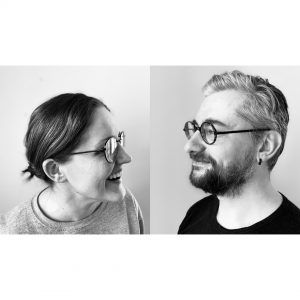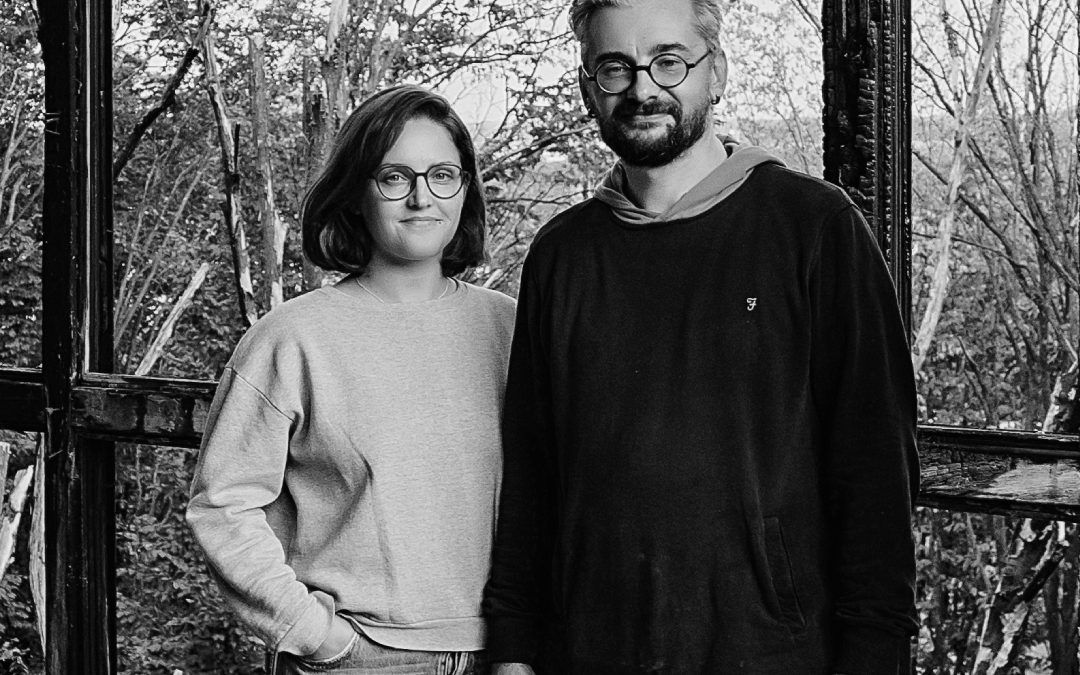"MoFu 360/365" creatives:

Tadas Stalyga and Rita Kundrotaitė
Profile
Tadas Stalyga: My practice extends over a range of disciplines, and the choice of a medium always is situational – the form and the process emerges in relation to an idea for work. In turn, the origin of an idea is inextricably linked to the site – ideational, such as history, culture or politics, and sensuous aspects, such as, aurality, visuality and spatiality, are at play. Consequentially, I have made work for galleries, theatres, screens, and natural settings. Most recently, representation of a site on a screen (phone>monitor>cinema) came to the forefront of my practice. Such approach allows for the combination of a real, physical site with a virtual, filmic space and time. In this double space, simultaneously real and imaginary, the facts derived from the ‘ordinary’ mix together with the extraordinary laws of the film – scale, gravity, perspective, etc.
Rita Kundrotaitė: My practice revolves around design and architecture of the interior space. The relationship between humans and their immediate environment, how it is impacted by behavioral modeling, social and cultural factors, forms the core of my decision making process. With each intervention into the space I ask how certain decisions impact on our perception of temporality, how our rhythm and experience of being can be effected through the manipulation on the sensory level. To date, I have been focusing on the development of private and public interiors – from a cozy family home, to an arts gallery, or a dynamic co-working space.
Objects being interpreted
Restaurant “Trys mergelės” (Kaunas, Lithuania).
About the project
Restaurant “Trys mergelės” (Three Virgins) is a significant object of Kaunas architectural heritage. Designed by Viktorija and Alfredas Jakučiūnai this building is one of the most striking examples of Soviet modernism not only in Kaunas, but also in Lithuania, which also gained recognition in the Soviet Union. Over time, the legend of “Trys mergelės” began to fade – the former restaurant later became a cafe, nightclub, and the building burned down several times after the club went bankrupt. Today, only structural elements of this building remain, the skeletons of the legendary restaurant are waiting for reconstruction – a complex of residential and service premises will soon sprout there.
The fate of the building reflects the broader processes associated with the architectural and ideological legacy. In Lithuania, as in other countries of the former Soviet bloc, the architecture of this time often reminds of a difficult period in the history of the nation. However, the history of the building does not only belong to the former occupiers – this object qualitatively reflects the architectural idea of the time, and its uniqueness seems worth preserving for future generations.
For the program “Modernism for the Future”, we will prepare an archeological installation that polemics the fate of the building: the fragments collected in the ruins, the exterior and interior elements of the building, the footage, testimonies of the community and experts, shots reflecting the current state, cases about the past, present and future of the legendary restaurant. “It is necessary to demolish” or “it is necessary to save” – the visitor of the installation will be at the center of the ongoing discussion about the fate of this building. On the one hand, the area of the building today is unsafe, on the other hand, without taking into account the spirit of the building, the heritage will be destroyed irreversibly. We hope that the installation will help to focus not only on the fate of the “Trys mergelės”, but also on broader issues related to the heritage of Kaunas modernism.


